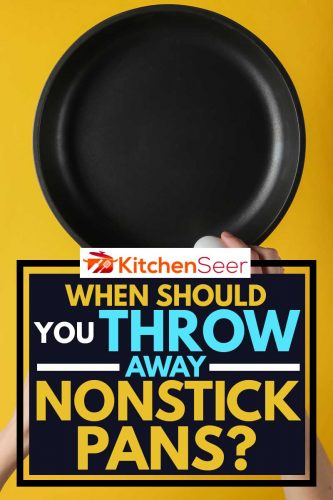 Nonstick pans are excellent cooking vessels in the kitchen. The coating on these pans creates a slick surface, so food doesn’t stick. Butter or oil can be eliminated or used sparingly on a nonstick pan. Plus, these pans are super easy to clean. Over time though, nonstick pans can start to show wear. At some point, your beloved pans might need to be replaced. When should you throw away nonstick pans?
Nonstick pans are excellent cooking vessels in the kitchen. The coating on these pans creates a slick surface, so food doesn’t stick. Butter or oil can be eliminated or used sparingly on a nonstick pan. Plus, these pans are super easy to clean. Over time though, nonstick pans can start to show wear. At some point, your beloved pans might need to be replaced. When should you throw away nonstick pans?
Once the Teflon or a similar type of coating on your nonstick pan starts to flake or is scratched, it’s time to throw it away. Nonstick pans that are discolored, chipped, or warped should also be appropriately disposed of and replaced.
Throwing away a kitchen tool that you probably use daily isn’t an easy decision. Keep reading as we dig deeper on the topic of when you should pitch your nonstick cookware. We’ll also answer questions about nonstick surfaces and how to dispose of your pans properly.
Is It Okay To Use Scratched Nonstick Pans?
The short answer to this question is: No. If a nonstick pan has scratches, the coating will start to flake or chip. While it’s not appetizing that flakes will likely find their way into your food, they won’t harm you. When the nonstick surface starts to show wear and tear, it’s other chemicals from the coating you need to be concerned about. These chemicals are more likely to be released and leech into your food.
According to an article published by the University of Calfornia-Berkeley, there are chemical compounds in nonstick cookware that might have a toxic effect on your health. The chemical polytetrafluoroethylene (PTFE) has nonstick properties and is the coating on cookware that creates a slippery surface. Teflon is the brand name of the coating used by many manufacturers. Teflon isn’t considered toxic. But other chemicals used in the creation of the slick cooking surface are thought to be toxic by some agencies.
Scratched cookware will also have an uneven surface for you to cook on and might not heat evenly. You should always make sure your food is heated evenly and to the right temperature. It’s also possible that a scratched pan will begin to harbor bacteria in the areas that are gouged.
Can Nonstick Pans Be Recoated?
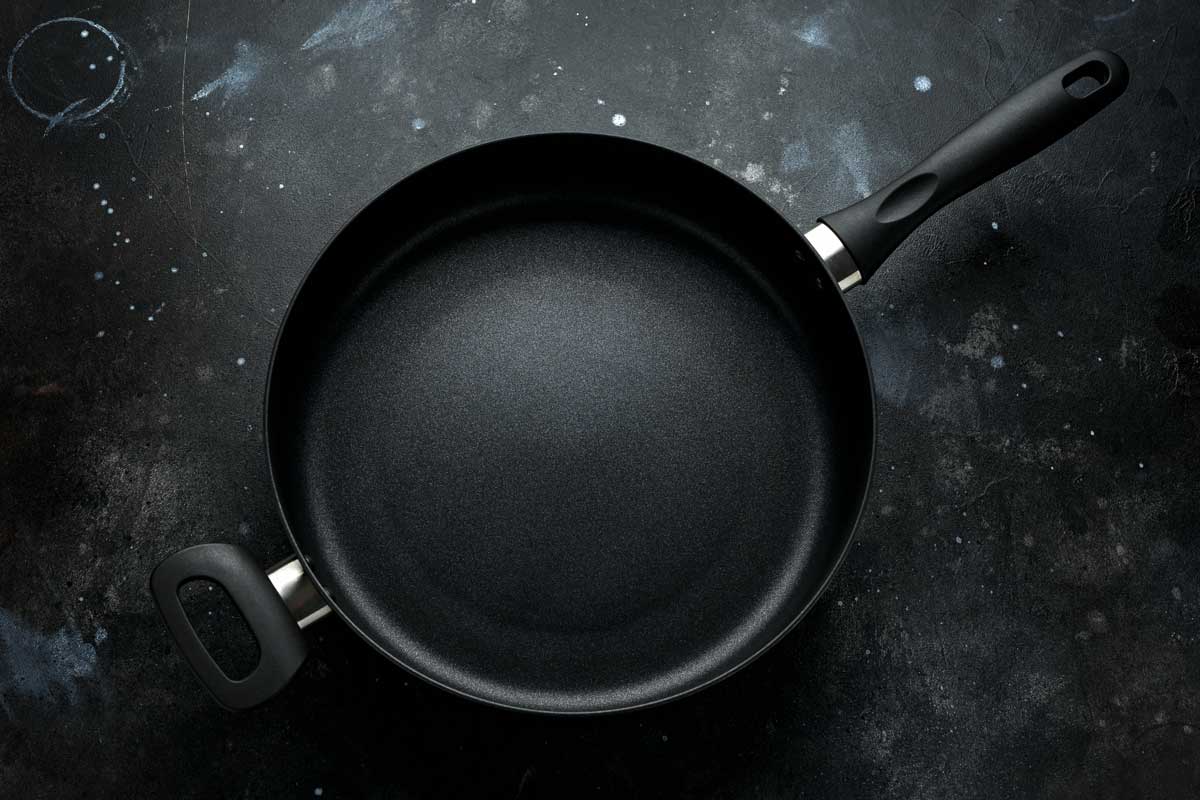
Nonstick pans can be recoated, but it’s not a do it yourself type of task. Resurfacing a pan is a complex and multi-step process that is best left to the professionals. Several companies in the industry offer recoating services for cookware, and it’s not cheap. Contact one of the pro services to get a quote. Then, you can decide if it’s money well spent to recoat your pan.
Generally, the companies that provide recoating services serve the commercial restaurant industry. But if your pans were expensive or you’re attached to them, it’s worth a shot to give them a call.
Sometimes though, it’s time to let go. For most of us, it’s less expensive to buy a new pan.
How To Dispose Of Nonstick Pans?
Disposing of your nonstick pans is a sticky situation. We have a few suggestions on how to get rid of your coated cookware:
Recycle Bin
Pans can’t be recycled in most areas while the Teflon-like coating is in place. However, some recycling companies will accept the pans and take care of removing the nonstick surface. We suggest you contact your local recycling company and ask if they accept nonstick cookware.
Scrap Metal
If your local recycling company won’t take your nonstick pans, contact a metal scrap yard or a junkyard. Reclaiming metal is a specialty for these companies. Once the pans are melted, the nonstick coating will separate from whatever metal the pan was made from. There is value in the leftover scrap for these experts.
Mail-Back
Some manufacturers of higher-end cookware offer lifetime guarantees on their products. Contact the manufacturer of your pan and find if it can be replaced for free. You might have to foot the bill for mailing the old pan, but a new one will be shipped to you. Or, when you purchase a new nonstick pan from certain companies, you can use the packaging to mail back the used pan. There are a few cookware manufacturers that will accept used nonstick pans and take care of the recycling if you’ve made a new purchase from them.
Sandblast
Instead of getting rid of the pan, consider finding a local company to sandblast the nonstick coating. Once the coating is removed, you’ll have a metal pan that is like new. Your pan won’t be nonstick, but it will be an excellent piece of cookware you can use to prepare food.
If your pan is warped or the metal is chipped, you should find a way to recycle the pan.
Tips for Keeping Nonstick Pans Like New
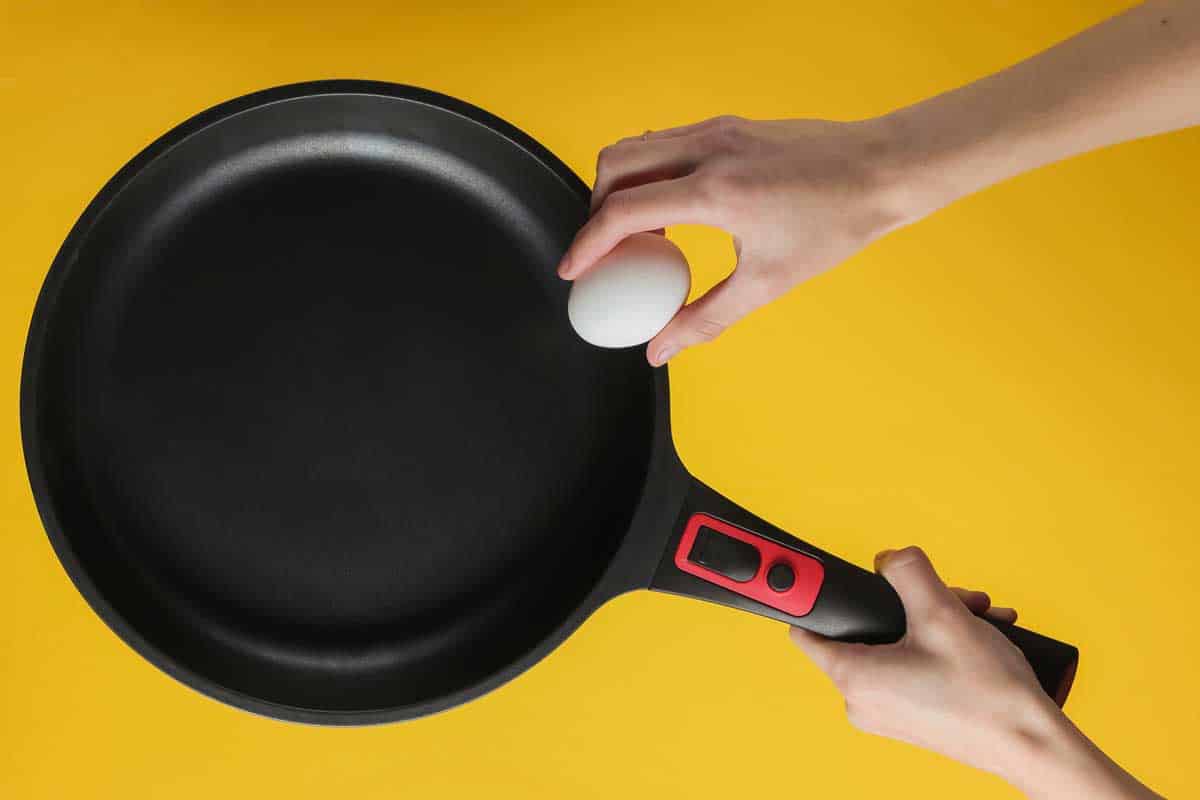
Nonstick pans make cooking and clean up a lot easier in the kitchen. The coating on these pans, however, is a bit delicate. And, some experts claim the lifetime of the nonstick surface is only about five years.
Here are five tips on how to care for your nonstick pans and make them last:
- Don’t stack the pans as they can scratch the surface. If you need to stack them, place a towel or some sort of non-abrasive material between each piece.
- Don’t use metal utensils to stir your food. Use tools like wooden spoons or silicone spatulas to move food around the pan.
- Use a soft cloth and gentle soap to clean your pans. Avoid any abrasive cleaners or sponges as they can scratch the nonstick surface.
- Don’t preheat your nonstick pans or overheat them on high temperatures. It’s best to cook your food at medium heat.
- Clean and dry your pans as soon as possible after using them. The build-up of food can start to discolor the surface.
Sometimes You Have to Replace Your Nonstick
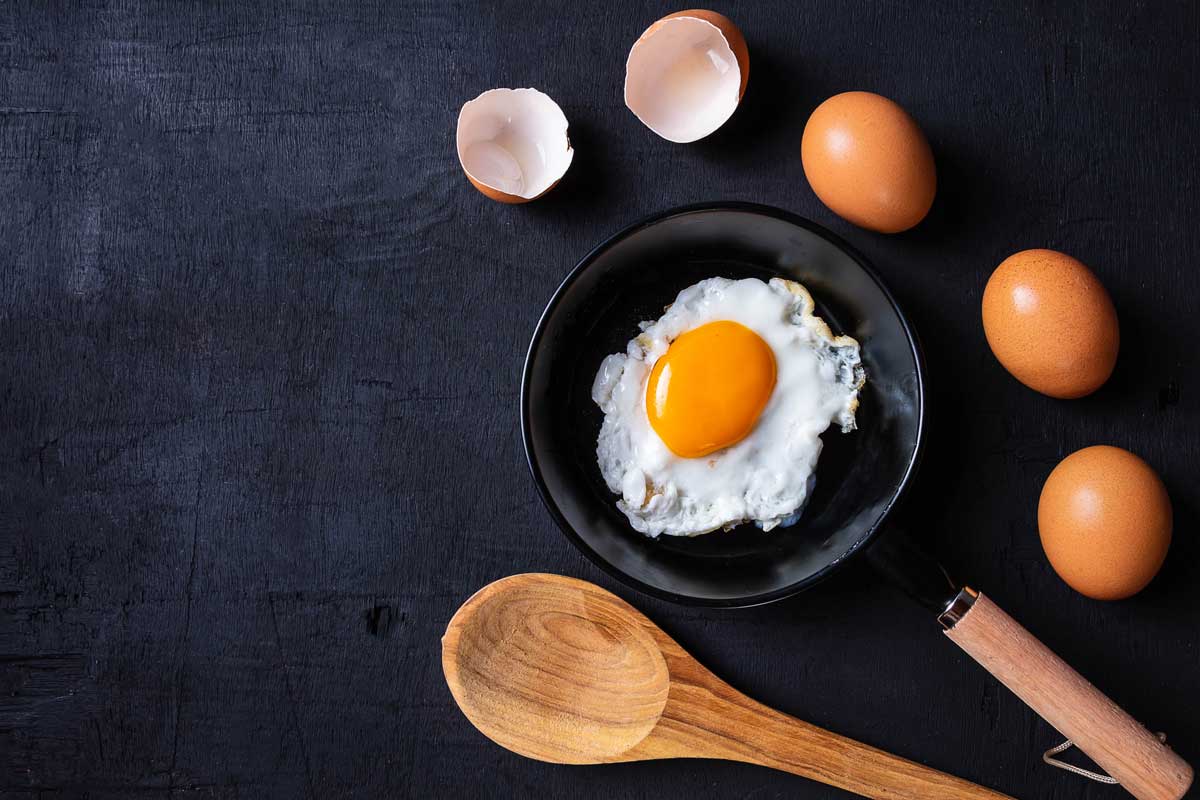
The thought of having to part with a nonstick pan you love might be overwhelming. Or maybe you just don’t want to face the fact that it’s time to replace a pan that’s given you so many amazing meals.
We hope this post has helped you understand when you should throw away nonstick pans. You need to get rid of any nonstick cookware that is scratched, chipped, or damaged in any way. It’s not worth the potential health risk by continuing to use your worn-out pans.
There are a few options for disposing of your pans through a recycling type of program. We hope that you find one that works for you.
Lastly, consider buying nonstick pans that come with a lifetime guarantee. They might cost a bit more, but a reputable manufacturer will replace them if they start to wear.

![A Nonstick All Clad pot and pan aisle at a Williams Sonoma store, Are All-Clad Pans Teflon Free? [A Complete Guide]](https://kitchenseer.com/wp-content/uploads/2022/10/Nonstick-All-Clad-pot-and-pan-aisle-at-a-Williams-Sonoma-store-250x250.jpg)
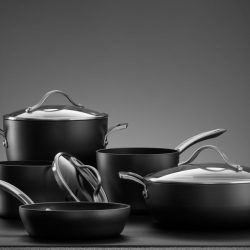
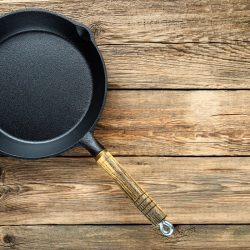

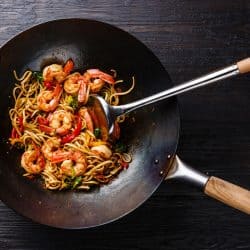
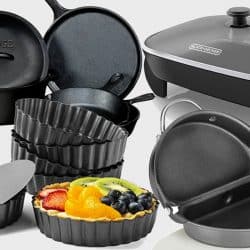
Can you throw the scratched non-stick pan in the trash?